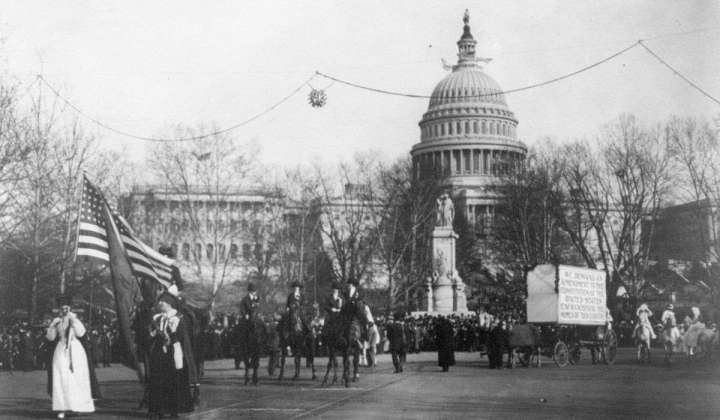Senators lead bipartisan push for women’s suffrage monument on National Mall

Senators in both parties launched an effort Tuesday to place a national monument to the 19th Amendment and women’s right to vote on the National Mall, a stretch of Washington dotted with popular memorials — and where space is limited.
Sens. Tammy Baldwin, Wisconsin Democrat, and Marsha Blackburn, Tennessee Republican, said they filed the Women’s Suffrage National Monument Location Act because the issue is important enough to merit a spot on the popular cross-section of the capital.
It was also necessary. The law requires a specific act of Congress to place new memorials or visitor centers on the Mall.
Ms. Baldwin, who previously introduced legislation to put a women’s suffrage monument on federal lands and establish a commission on the 19th Amendment’s centennial in 2020, said the Mall would be the monument’s “rightful place.”
“The National Mall is home to memorials for those who fought for our freedom, presidents who defined our country, and the seat of our government, and it is only fitting that it also houses the Women’s Suffrage National Monument,” she said.
Ms. Blackburn noted she is the first female senator from Tennessee and that it would be important to honor key women in the suffrage movement, including Susan B. Anthony, on the Mall.
The Mall is a long stretch of verdant real estate that stretches from the Capitol to the Washington Monument and is lined by the Smithsonian Institution museums. The term is also used to describe outer areas stretching to the Lincoln Memorial, Jefferson Memorial and West Potomac Park.
Recent additions to the area have honored Black history, including a memorial to the Rev. Martin Luther King Jr. and the National Museum of African American History and Culture.
Yet other initiatives have struggled to get a spot on the Mall. Notably, advocates for a World War I memorial said it deserved a spot alongside Mall memorials honoring 20th-century conflicts such as World War II, the Vietnam War and Korean War.
An effort to nationalize the District of Columbia War Memorial near the Lincoln Memorial failed. Instead, a site at Pershing Park near the White House, which already honored Gen. John J. Pershing from the 1914-1918 conflict, was broadened into the National World War I Memorial.
Even as lawmakers seek new monuments, there is an effort to fix the ones that exist.
Top lawmakers are pressing the Defense Department to correct more than 1,000 reported misspellings and other mistakes on the Wall of Remembrance, which was recently added to the Korean War Veterans Memorial in Washington.
Researchers who pored over the names said that, in addition to spelling problems, some people were not involved in the 1950-1953 conflict, while others who should have been included were left off the wall.
The memorial was dedicated in 1995, and the wall was unveiled last year to list the names of 36,000 Americans who died in the war.






